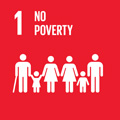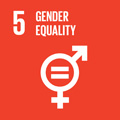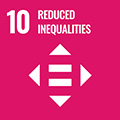- Docente: Paolo Zagaglia
- Credits: 6
- SSD: SECS-P/01
- Language: English
- Teaching Mode: In-person learning (entirely or partially)
- Campus: Ravenna
- Corso: Second cycle degree programme (LM) in International Cooperation on Human Rights and Intercultural Heritage (cod. 9237)
-
from Nov 11, 2024 to Dec 13, 2024
Learning outcomes
The course provides the students with an introduction to key concepts in the field of development economics. We will discuss the meaning of the term 'development' from a macroeconomic perspective, and consider the main issues surrounding its measurement. We will dwelve into the determinants of a country's income, and consider their implications for the international distribution of income. We will then consider the role of alternative macroeconomic policies and the effects of international economic integration on the prospects for income convergence across countries. By the end of the course, the student: knows the main theoretical approaches to defining and measuring human development; understands what private-sector forces drive the creation of income; understands how the effects of monetary and fiscal policy on income growth unfold; understands the relation between trade policy and economic development; is capable of critically assessing the role of macroeconomic policies and the effects of international economic integration on the process of development.
Course contents
The aim of the course is to provide the foundations for understanding alternative interpretations (i.e. theories) on the determinants of income and people's capabilities over the long run. These theories matter because they have implications for the foundations of public policies on one hand, and for development programs offered by the private-sector actors (e.g., by NGO's) on the other.
During the first part of the course, we will take a 'standard' macroeconomic perspective about what the developing 'world' is about. We will discuss the relation between changes in income and living standards across the world, with a focus on measurement issues. We will turn our attention to the issues of inequality and poverty, both from a theoretical and an empirical point of view. The aggregate implications of the demographic structure for the path of economic development will be presented in the broader context of conflicting views about the effects of high fertility for developing countries. Since education and health play a central role in the determination of a society's wellbeing, we will discuss the macroeconomic channels that can either hamper or strengthen improvements in living conditions. At last, we will study the effects of international economic integration (i.e. trade in goods, services and savings) on the balance of payments of developing countries.
The second part of the course presents an alternative approach for investigating a wide arrange of issues in economic development. We will study some key concepts in the field of behavioural development economics. Our attention will turn to a microeconomic interpretation of behaviour that identifies sources of 'traps' for an individual within a society. This can take place in a context where a person does not - or is unable for alternative reasons - to consider the full implications of her/his own decisions on a social scale, thereby hampering the possibility for a person to improve her/his living conditions over time.
Readings/Bibliography
A distinction is made between the students who attend at least 80% of the lectures of the course (i.e. attending student), and those who do not (non-attending students).
Study materials for non-attending students
1 - All the chapters from:
Carlos Gradín, Murray Leibbrandt, Finn Tarp. 2021. Inequality in the Developing World, Oxford University Press, publicly available at
https://academic.oup.com/book/39562
2 - Chapters 1 to 5 (part I in full) from:
Anindya Banerjee, Esther Duflo. 2011. Poor Economics: A Radical Rethinking of the Way to Fight Global Poverty. New York City: Public Affairs
Study materials for attending students
Please notice that the literature list for attending students might be adjusted/changed by the professor during the course, based on discussions with the class.
1 - Chapters 1, 2, 5, 6, 8, 12, 13 from:
Michael P. Todaro, Stephen C. Smith. 2012. Economic Development. 11th Edition, Addison-Wesley
2 - Chapters 1 to 3 (i.e. Part I in full) and Chapter 4 from:
World Bank Group. 2015. World Development Report 2015: Mind, Society, and Behaviour. Washington, DC: World Bank, available at
https://www.worldbank.org/en/publication/wdr2015
Teaching methods
The course will consist in a set of three-hour lectures.
The classes will provide the opportunity both to facilitate the interaction between the professor and the students, and to stimulate the debate among students themselves. In this sense, class attendance is critical to take full advantage from an in-depth discussion on the course topics.
Students are free to decide whether to attend the lectures, or not: there is no mandatory attendance for the course. Please notice that:
a. the required study literature for attending and non-attending students is different
b. the assessment of both attending and non-attending students will take the same form as detailed below.
Students with a disability or specific learning disabilities (DSA) who are requesting academic adjustments or compensatory tools are invited to communicate their needs to the teaching staff in order to properly address them and agree on the appropriate measures with the competent bodies.
All the students should keep in mind that the use of generative artificial intelligence is considered a form of plagiarism.
Assessment methods
ALL the students (regardless of class attendance) will take a three-hour written exam with questions based on the material covered in the mandatory study materials.
The written exams will take place during the standard assessment sessions scheduled by the professor throughout the academic year.
Grading criteria
The answers provided by the students in the written exam will be assessed based on the following.
The ability of the student to achieve a coherent and comprehensive understanding of the topics addressed, to critically assess them and to use an appropriate language will be evaluated with the highest grades (A = 27-30 con lode).
A predominantly mnemonic acquisition of the study materials, coupled with evidence of gaps and deficiencies in terms of language, critical and/or logical skills will result in grades ranging from good (B = 24-26) to satisfactory (C = 21-23).
A low level of knowledge of the study materials together with gaps and deficiencies in terms of language, critical and/or logical skills will lead a student to ‘barely pass' the exam (D = 18-20) or to a fail grade (E).
Teaching tools
The students who attend the course will be provided with a 'paper pack' including all the scientific articles, and set of slides for each lecture topic.
These materials will be made available on the Virtuale page for the course.
Office hours
See the website of Paolo Zagaglia
SDGs



This teaching activity contributes to the achievement of the Sustainable Development Goals of the UN 2030 Agenda.
